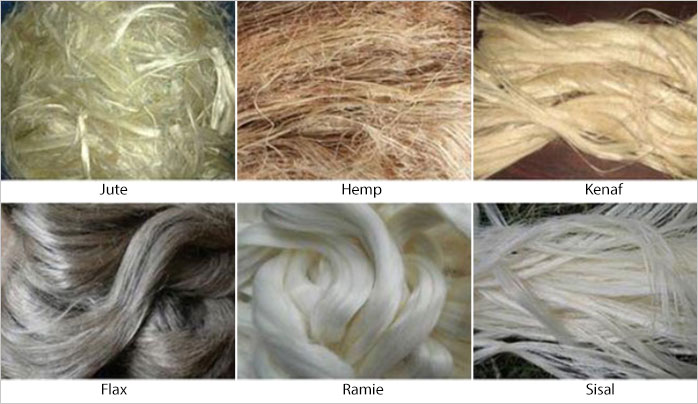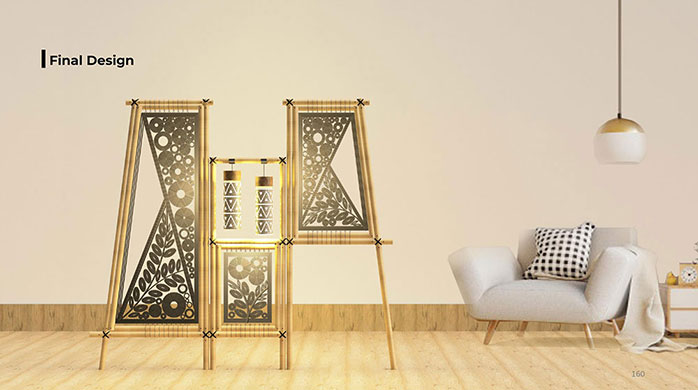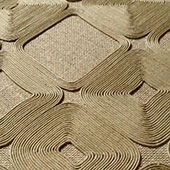History
Natural fibers have traditionally been used in all cultures of the world to meet basic requirements of clothing, storage, building material, and for items of daily use such as ropes and fishing nets. People in the early times used various kinds of natural fibers depending on their local availability.
Different types of fibers:
Fibers can be extracted from the -
• Bark (banana, jute, hemp, and ramie)
• Stem (banana, palm, and bamboo)
• Leaf (palm, screw pine, sisal, and agave)
• Husk (coir)
• Seeds (cotton)
• Grass (sikki, madhurkati, benakati, munj)

Different natural fibres Source: [IR1]
Location
• Natural fibres are obtained from all over India.
• Sisal –Maharashtra
• Screw pine, coir – Kerala
• Palm leaf –Tamil Nadu and Kerala
• Banana – Southern Indian states
• Korai grass –Tamil Nadu and Kerala
• Pineapple leaf fibre–Meghalaya
• Shitalpati–Assam, Meghalaya
• Bamboo – largely North-Eastern India
• Sikki and Munj grass – Bihar
• West Bengal is another region abundant in natural fibres. A variety of grasses like Madhurkati, Khudi, Taal Beti, and Benakati are used for making products. Palm leaf, Khajur leaf, cane, and bamboo are other natural fibres used.
Objective of the Project
The objective of the project was to design a contemporary product range of natural fibres using a particular technique. It was important to study the technique and come up with innovative design directions that would lead to a wide range of products. It led to finalizing the jute partitions and lamps as the final concept. One of the main aspects was to integrate the user and design a modular system where the user will be able to customize the product. Another was that it was popularizing local craftsmanship and economically empowering them. It was important for the project to emphasize the jute work and its beauty of it. Mock-ups, prototyping and 3D visualization were used to understand the effect of the product in an interior space. The final design aims at creating an artistic jute mural through the panels of partition walls which will create a unique experience for the users.
Case Study Download:
• Reimagining Traditional Techniques and Forms......


